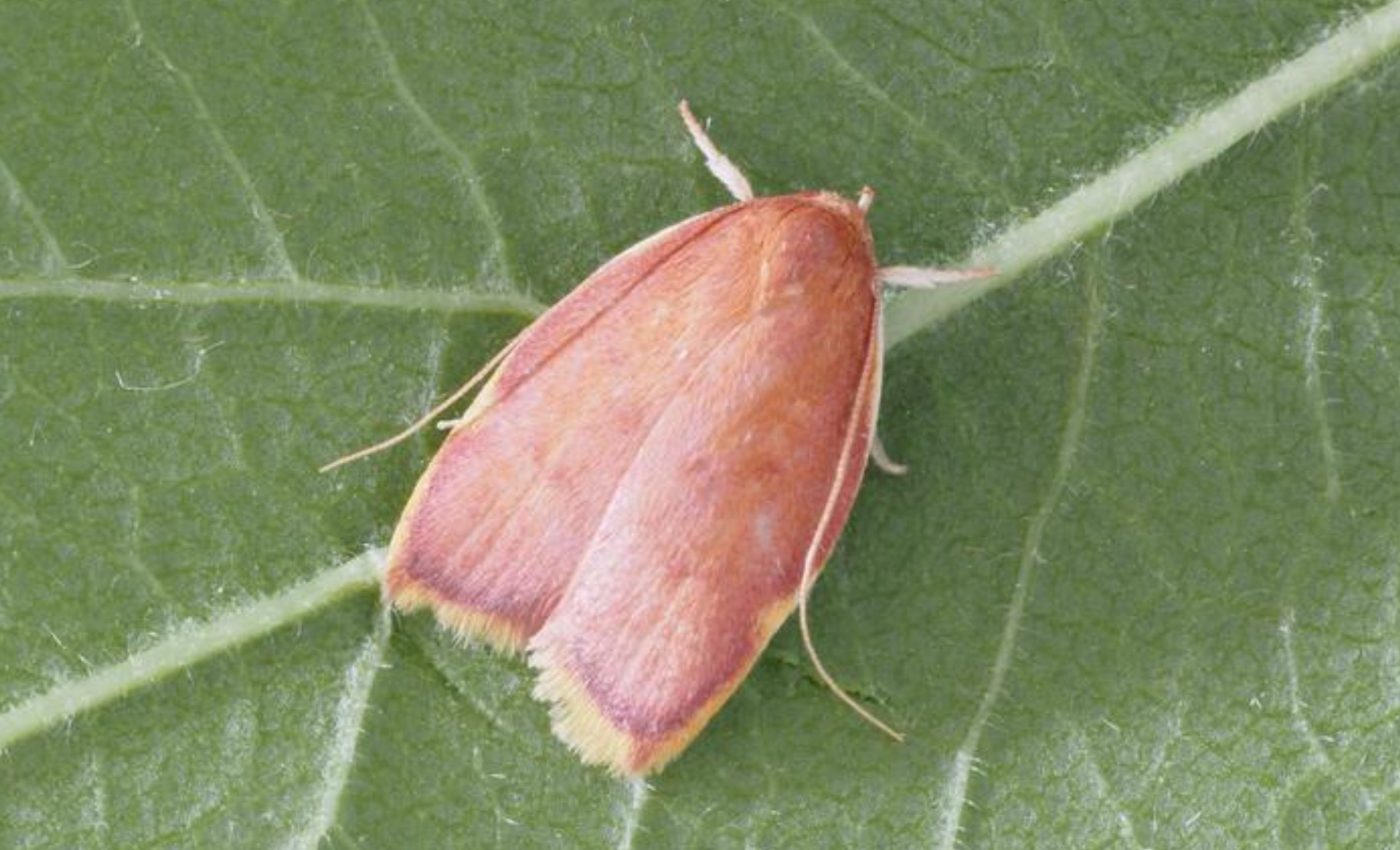
New moth species revealed after a century of mistaken identity
Nature can still surprise us, even in places we think we know well. Europe’s wildlife has been studied for centuries, yet some species have managed to hide in plain sight. One of them is Carcina ingridmariae, a bright, colorful moth.
For more than 100 years, this moth species has been misidentified. Its true identity has now been revealed, thanks to a mix of sharp observation and modern genetic tools.
Carcina ingridmariae found after 100 years
Dr. Peter Huemer from the Tyrolean State Museum Ferdinandeum in Innsbruck, Austria, led a team that described the new species.
For over a century, it was thought to be oak carcina, Carcina quercana, a moth that was first described in 1775. The two look almost identical, sharing vivid pink and yellow tones. That resemblance kept the new species hidden in collections and field sightings for decades.
C. quercana has always been seen as easy to recognize, even making it onto the cover of an identification book.
Its classification history is more tangled, moving through several families before most scientists agreed to place it in the family Peleopodidae. That agreement didn’t stop surprises from turning up, as this discovery shows.
DNA confirms the new moth species
The first clues came from DNA barcoding in Greek moth surveys. Tests showed over 6.5% genetic difference between C. ingridmariae and C. quercana – far beyond what’s expected within a single species.
When the team took a closer look, the differences were clear. Male C. ingridmariae often have paler orange-brown wings with fewer markings. Their genital structures are distinct, with a more slender gnathos and a different cucullus shape.
Females show an obvious difference in having a broad, tubular antrum. These features match the genetic split and confirm the species is new.
Coastal areas to mountain slopes
Researchers think the larvae feed on several oak species, including Quercus trojana, Q. coccifera, and Q. ilex. Records from north Cyprus show the moth occurs in areas without oaks, suggesting its larval host may be more flexible than previously thought.
The caterpillars probably make flat, silvery-white silk webs on the underside of leaves, just like C. quercana. Pupation likely happens between two spun leaves.
Adults appear in many habitats, from coastal areas to mountain slopes up to 1,500 meters (4,920 feet). They fly in two main periods: early May to late June, and mid-August to early October.
Tracking the moth’s range
Confirmed populations of Carcina ingridmariae have been recorded in several eastern Mediterranean countries, including Greece, Croatia, Cyprus, and Türkiye.
In addition to these verified locations, there are strong indications that the species also occurs in Lebanon, Israel, Georgia, and Azerbaijan, based on regional records and specimen analysis.
The geographical range of this moth overlaps with that of Carcina quercana, a species that is widely distributed throughout Europe and also found in parts of North Africa.
Because the two species are so similar in appearance, distinguishing between them in areas where their ranges meet cannot be done by sight alone.
In such cases, researchers must rely on DNA analysis or a detailed examination of anatomical features, particularly the structure of the genitalia, to confirm the correct identification.
A personal name for a rare find
Dr. Huemer decided to honor his wife when naming the species. “It is without doubt the prettiest species I have encountered in my long scientific career, even though it is still unnamed.” For him, it was “obvious” the new moth should bear her name.
He announced the dedication on their 42nd wedding anniversary, giving the discovery a personal and lasting touch.
Familiar landscapes with unknown species
Finding C. ingridmariae shows that even colorful, distinctive species can go unnoticed without the right tools.
DNA barcoding has uncovered many new moth species in Europe, but most are small and dull-colored. Discovering a vivid new species hiding among individuals of a different, but well-known species, is unusual.
The case proves that wide genetic surveys, paired with traditional anatomy, can change how we see biodiversity. As Dr. Huemer’s work shows, even familiar landscapes may hold species we’ve been overlooking for generations.
The study is published in the journal Alpine Entomology.
Image credit: P. Huemer/Ferdinandeum
—–
Like what you read? Subscribe to our newsletter for engaging articles, exclusive content, and the latest updates.
Check us out on EarthSnap, a free app brought to you by Eric Ralls and Earth.com.
—–













